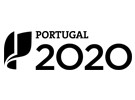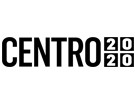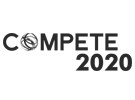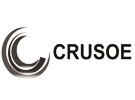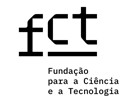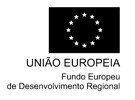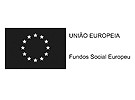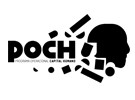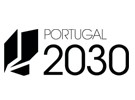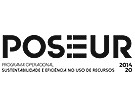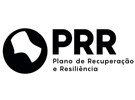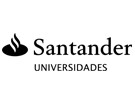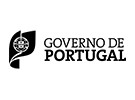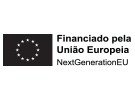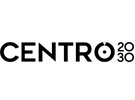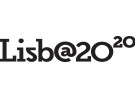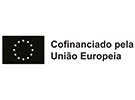



Publication in the Diário da República: Despacho n.º 8955/2023 - 31/08/2023
7 ECTS; 2º Ano, 2º Semestre, 15,0 T + 60,0 PL + 3,0 OT , Cód. 938096.
Lecturer
- Fernando dos Santos Antunes (1)(2)
(1) Docente Responsável
(2) Docente que lecciona
Prerequisites
Not applicable.
Objectives
1.Identify the materials, techniques and technologies used in the production of furniture;
2. Identify and understand the causes and mechanisms of alteration and deterioration of objects: the processes of alterability natural aging of materials, and alteration of materials damages and pathologies;
3.Understand and apply the theory of conservation and restoration in furniture, in the different types of intervention according to the deontological, ethical and technical criteria and aspects to be taken into account in the design and intervention phases;
4.Understand and execute the preparatory phase of the treatments, applying basic rules of organization and operation in the laboratory and shipyard, registering and documenting the object and the intervention process, Identification of the materials and techniques of the object, the preparation of diagnosis and formulation treatment proposal;
5.Understand and execute furniture conservation and restoration treatments, at the level of structures and at the level of surface strata.
Program
THEORETICAL COMPONENT:
A. TECHNOLOGICAL ASPECTS
1. Types of Wood
1.1. Identification and dating processes
2. Adhesives, Gums, Saps and Resins
2.1. As collage products
2.2. As finishing/polishing products
3. Production of Furniture
3.1. Accessories applied in production and decoration
3.1.1. Metal fittings and other miscellaneous materials: types and functions
3.2. Object structure
3.2.1. Connections and fittings: types and shapes
3.3. Decoration on furniture
3.3.1. Materials: woods, metals, osteological, malacological, animal skins, adhesives, gums, saps, resins, waxes and oils
3.3.2. Types and techniques of decorative work and coatings
3.3.2.1. Carving, turning, profiles
3.3.2.2. Inlays
3.3.2.3. Plated, veneered, marquetry
3.3.2.4. Gilding and silvering: the leaf | the metallic temper
3.3.2.5. Lacquered and encrusted
3.3.2.6. Synthetic veneers and laminates
3.3.3. Wood Colouring
3.3.3.1. Paints: tempera | oil | encaustic
3.3.3.2. Transparencies: dyes
3.3.3.3. Glazes: mordants
3.3.4. wood finishes
3.3.4.1. Polishing: oils | waxes | varnishes | mixture
3.3.5. Coating of seat furniture, beds and other
3.3.5.1. Engraved sole and leather
3.3.5.2. Entrances with vegetable and synthetic fibers and animal tissues
3.3.5.3. Upholstery: Natural and synthetic tissues | Natural and synthetic skins
B. CAUSES OF CHANGE AND DETERIORATION IN FURNITURE
1. Physical causes
1.1. Temperature and Relative Humidity
1.2. Mechanical action
2. Chemical causes
2.1. Liquid and gaseous solid pollutants
2.2. Solid and liquid reagents
3. Biological causes
3.1. Microorganisms - pests
3.2. Macroorganisms - plagues
3.3. Harmful animals and plants
C. CONSERVATION AND RESTORATION THEORY IN FURNITURE
1. Types of intervention - preventive, conservative, restore
2. Criteria and deontological, ethical and technical aspects to take into account in the project and intervention phases
LABORATORY PRACTICAL COMPONENT:
D. PREPARATORY PHASE OF TREATMENTS
1. Basic rules of organization and operation during intervention
2. Registration and documentation of the work and process intervention
2.1. Execution of photographic records
2.2. Execution of graphic schemes
2.3. Execution of technical design and mapping
2.4. Filling of Technical Record and Worksheet
3. Identification of object materials and techniques
3.1. Disarmed sight identification
3.2. Macroscopic and microscopic identification
3.3. Identification with the use of exams and analysis
4. Characterization of the state of conservation
4.1. Identification of the environmental conditions of the place of provenance of the work
4.2. Identification of previous interventions
4.3. Identification of situations that can be resorted to examinations and analysis
5. Discussion of results and conclusions
6. Treatment proposal formulation
E. CONSERVATION AND RESTORATION TREATMENTS
1. Conservation of the structure
1.1. Disinfection and disinfestation: products and techniques
1.2. Consolidation: products, materials and techniques
1.3. Fixation of superficial decorative coatings
1.4. Structure Review
1.4.1. Disassembly of elements
1.4.1.1. Removal of connecting metal accessories: nails, screws and other hardware
1.4.1.2. Cleaning of dust and dirt, and removal of glues, adhesives and gums
1.4.1.3. Cleaning of corrosion products of metal accessories
1.4.1.4. Stabilization of metal accessories: application of protection layer
1.4.2. Mounting of pieces and elements
1.4.2.1. Collages and tightening of collages: techniques and materials
2. Restoration of the structure
2.1. Volumetric reconstitution
2.1.1. Reconstitution of missing elements: structural and decorative
2.1.1.1. Techniques and materials
2.1.2. Filling of structure and decoration gaps
2.1.2.1. Techniques and materials
2.1.3. Levelling and polishing
2.2. Conception of support structures
2.2.1. Techniques and materials
3. Surface conservation
3.1. Fixation of chromatic and pictorial strata
3.2. Fixation/Collage of decorative or coating elements
3.3. Cleaning
3.3.1. Cleaning Systems: Physics; chemical; wet dry or mechanical
3.3.2. Solubilization tests of dirt, chromatic and pictorial
3.3.3. Cleaning: chemical reagents, organic solvents, enzymes, detergents, gels, abrasives
3.3.4. Cleaning levels: extension and precautions
3.3.5. Removal of non-original paint layers, repaintings and metal coatings and repolishing: paints, imitation metal leaves, varnishes, waxes and oils
4. Surface restoration
4.1. Filling of gaps
4.1.1. Materials and techniques
4.1.2. Levelling and polishing
4.2. Repolishing and finishing of surfaces
4.3. Chromatic and pictorial reintegration
4.4. Application of protection layers
Evaluation Methodology
Integrated Assessment Components and Their Weighting in Continuous and Final Assessment:
Theoretical Component (50%):
1.Written Work (25%)
2. Technical Sheet and Worksheet (25%)
Laboratory Practice Component (50%):
3. Performance (35%)
4. Attendance/participation (15%)
Complementary information:
-The evaluation results from the weighting of the evaluation items (1, 2, 3 and 4), with the student having to obtain at least 10 values for each component to obtain approval;
-Students who have an average equal to or greater than 10 are exempt from the exam;
-Students who obtain at least 10 values in the practical laboratory component (items 3 and 4) will be admitted to the exam;
-Students who do not obtain at least 10 marks in the practical laboratory component (items 3 and 4) will be excluded from the exam;
-Eventual improvements will be made only to the Theoretical Component (items 1 and 2) keeping in the final weighting the evaluation obtained in the laboratory practical component (items 3 and 4).
-The topic of the written work must be communicated to the teacher, using a form provided for this purpose, who will confirm and validate it beforehand.
Bibliography
- COLARES, J. Manual do Marceneiro. Biblioteca de Instrução Profissional. Brasil / Lisboa: Livraria Bertrand e Imprensa Portugal
- MCGIFFIN, R. (1983). Furniture Care and Conservation. Nashville, TN: AASLH
- ORDOÑEZ, C. e ORDOÑEZ, L. e ROTAECHE, M. (1996). Il Mobile: Conservazione e Restauro. Fiesole: Nardini Editore
- RIVERS, S. e UMNEY, N. (2012). Conservation of Furniture. Butterworth-Heinemann Series in Conservation and Museology. London: Routledge
- WERNER, A. e BROMMELLE, N. (1965). Deterioration and Treatment of Wood. Joint Meeting of the ICOM Committee for Scientific Museum Laboratories and the ICOM Sub-Committee for the Care of Paintings. Washington and New York: ICOM
Teaching Method
1.Theoretical classes, expository.
2.Laboratory practical classes, practical application sessions where interventions in furniture are developed, with supervision and guidance.
3.Tutorial guidance, pedagogical, technical and scientific support.
Software used in class
Not applicable.
